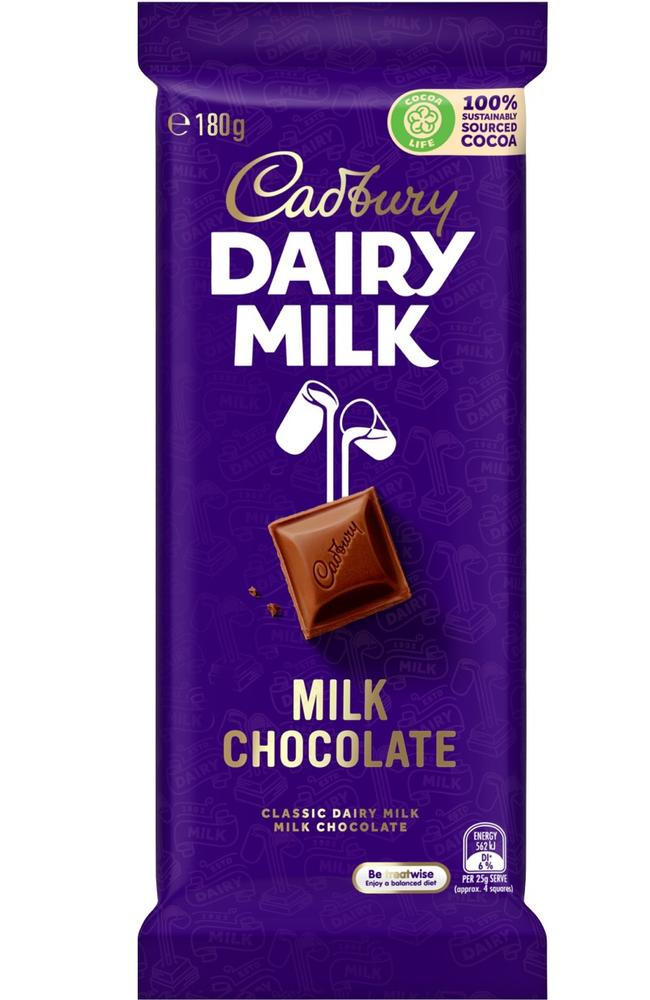Cadbury’s ‘stealthy’ move amid inflation crisis
The next time you buy a chocolate block you’d better watch out for a trend that will ultimately cost you more money.
It might be time for consumers to read the fine print the next time they pick up their groceries because ‘shrinkflation’ is on the rise.
Shrinkflation is when food suppliers cut costs by charging the normal amount for a product but reducing its quantity.
This “stealthy” pricing technique employed by retailers and supermarkets is particularly prevalent in junk food, an expert has warned.
Smith’s chips, Maltesers and even Cadbury chocolate have already jumped on board with the trend and cereals could be next.
Chief market strategist at Investment Smart, Evan Lucas, told news.com.au, “In the last couple of months shrinkflation is starting to become evident again.
“The best way to explain shrinkflation is it is inflation by stealth.”
For instance, he pointed out that in the last few years, Freddo Frogs, have gone from 15g down to 12g and a fun-sized pack of Maltesers went from 144g to 132g.
Smith’s chips, which used to be 200g, have been reduced to 170g, he said.
The most obvious example of shrinkflation has to be Cadbury’s chocolate blocks, which have reportedly cut down almost 50 per cent of their size over the last 20 or so years, including recently.

Shrinkflation is particularly easy to hide in junk food, according to Mr Lucas.
Since the 2000s, he said a Cadbury chocolate block has gone from 320g to 180g, representing a reduction of almost 44 per cent.
Customers don’t necessarily notices this, with Mr Lucas adding that the rows used to be five across but now they are just four. The confectionary item was in the past 15 lines long, but years later it’s now down to 12.
Last week, the BBC reported that Cadbury had reduced the size of its regular dairy milk bar from 200g to 180g.
A Cadbury spokesperson said it would be difficult to dig up records to see the size of the block two decades ago to confirm but did acknowledge that they were feeling the pressure from the supply chain crunch.
“We’re conscious of cost pressures currently facing households. We work very hard to keep our pricing accessible so that our range of products can be enjoyed by Australians,” they said.
“It’s been a challenging couple of years, largely due to Covid and cost impacts for our business. We’ve managed to absorb many cost increases, while continuing to invest in our brands and communities, keeping our products affordable with the same great quality and taste.
“We aim to hold prices for as long as possible, and while don’t have any changes to share now, we continue to look at ways to mitigate some of these increased costs.”
Shrinkflation on the rise
The weight of things like a Big Mac and a Coca Cola bottle have also been cut back considerably over the years, he explained.
Shrinkflation is not a new phenomenon though it is becoming more rampant as Australia’s supply chain buckles under pressure.
Covid-19 has put pressure on supply chains over the past two years.
More recently, Russia’s invasion of Ukraine as well Australia’s east coast floods has seen some foods become even harder to source.
In 2011 when parts of Queensland were hit by Cyclone Yazi, banana crops were devastated, causing the fruit to go from selling for $2 per kilogram to $14 per kilogram.
Indeed, 30 per cent of the world’s grain supply comes from the aptly named ‘bread basket of Ukraine’, which is currently in the throes of war against Russia, sparking concerns about global supplies.
As a result, Mr Lucas believes cereal brands will soon fall prey to the shrinkflation trend.

The problem with shrinkflation aside from the obvious extra costs to shoppers is that it is usually more pronounced than normal inflation, Mr Lucas warned.
“The standard inflation you’d see according to the ABS is about seven to eight per cent and historically that’s really high.
“But the thing about shrinkflation is it tends to be more aggressive.”
In some cases it could be as high as 20 per cent, he warned.
Mr Lucas said one measure to stop more shrinkflation would be the Reserve Bank of Australia (RBA) hiking up the cash rate.
“If inflation is getting away from us, it means prices start becoming irrational,” he explained.
“The RBA need to make sure prices stay stable.
“If inflation continues to run away, the RBA need to slow down the economy. There is every reason to slow price increases down by raising rates.”
He expects this to occur around September, although other analysts have pegged June as the month when things will change.
The official cash rate has been at a record low of 0.1 per cent since November 2020.




